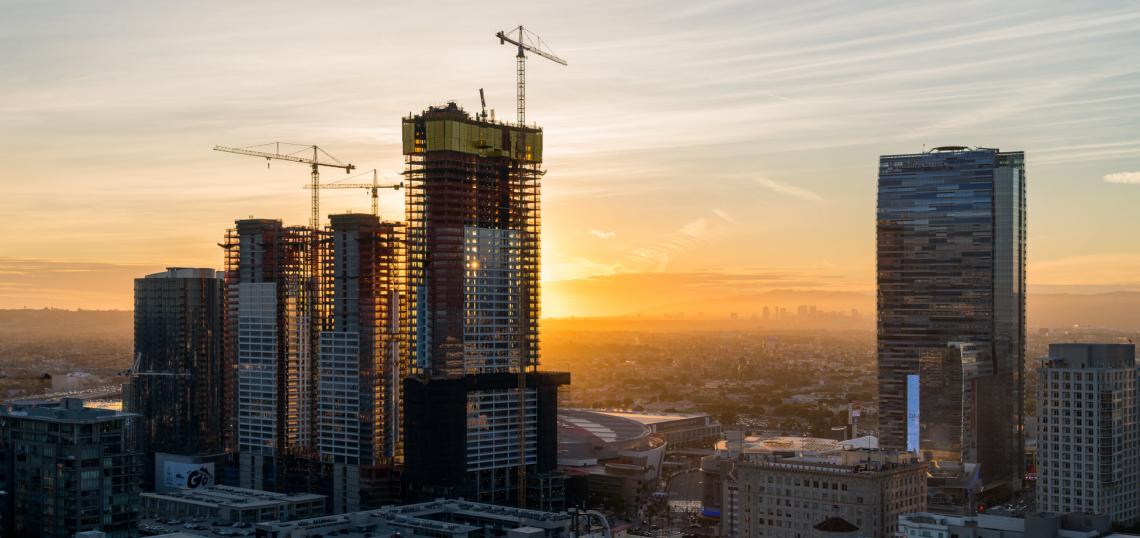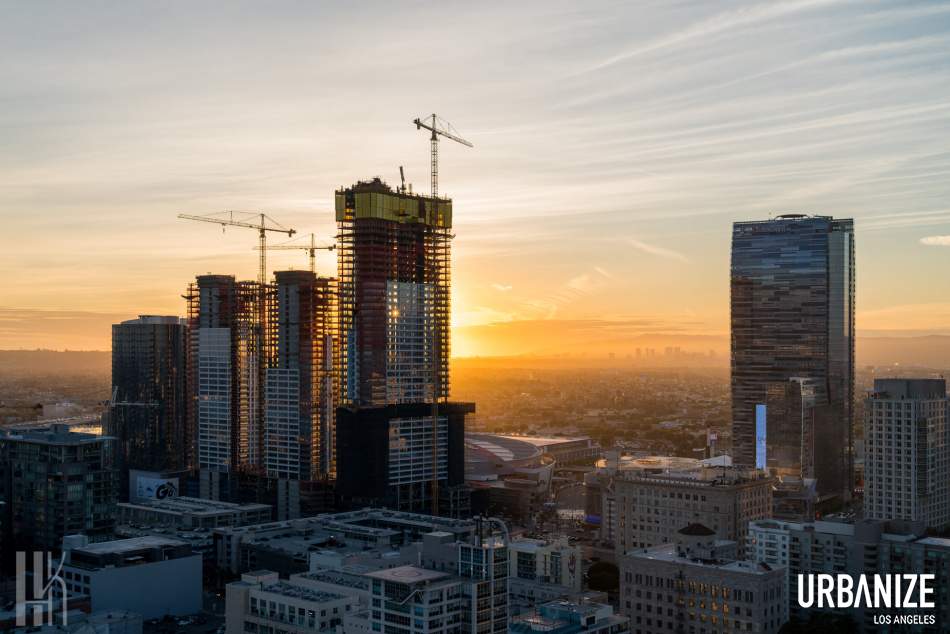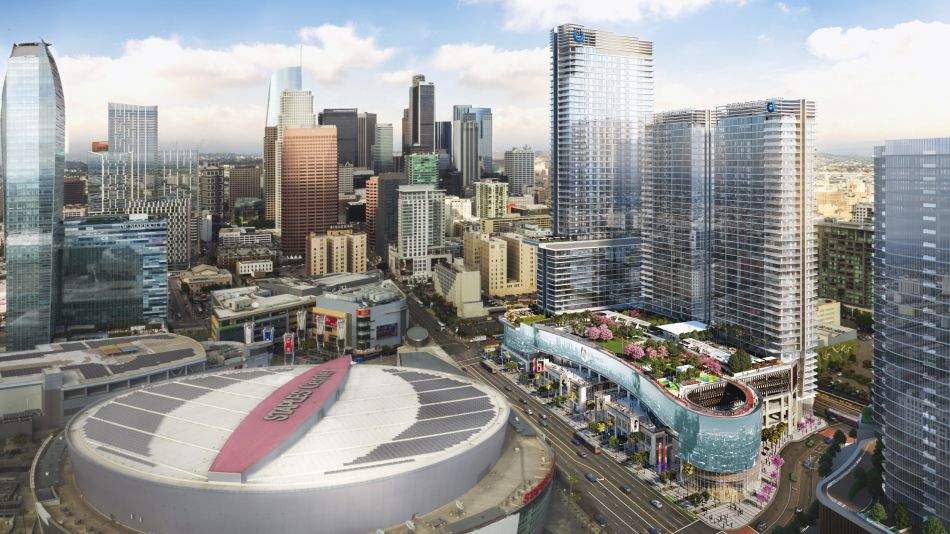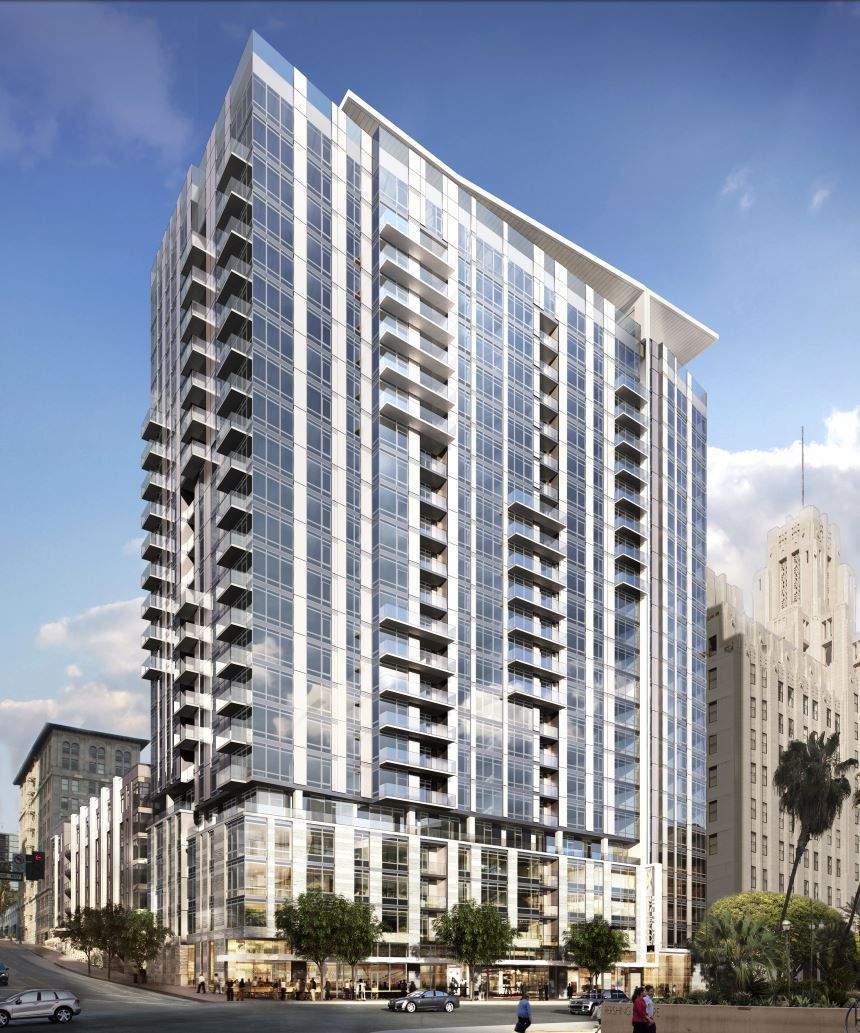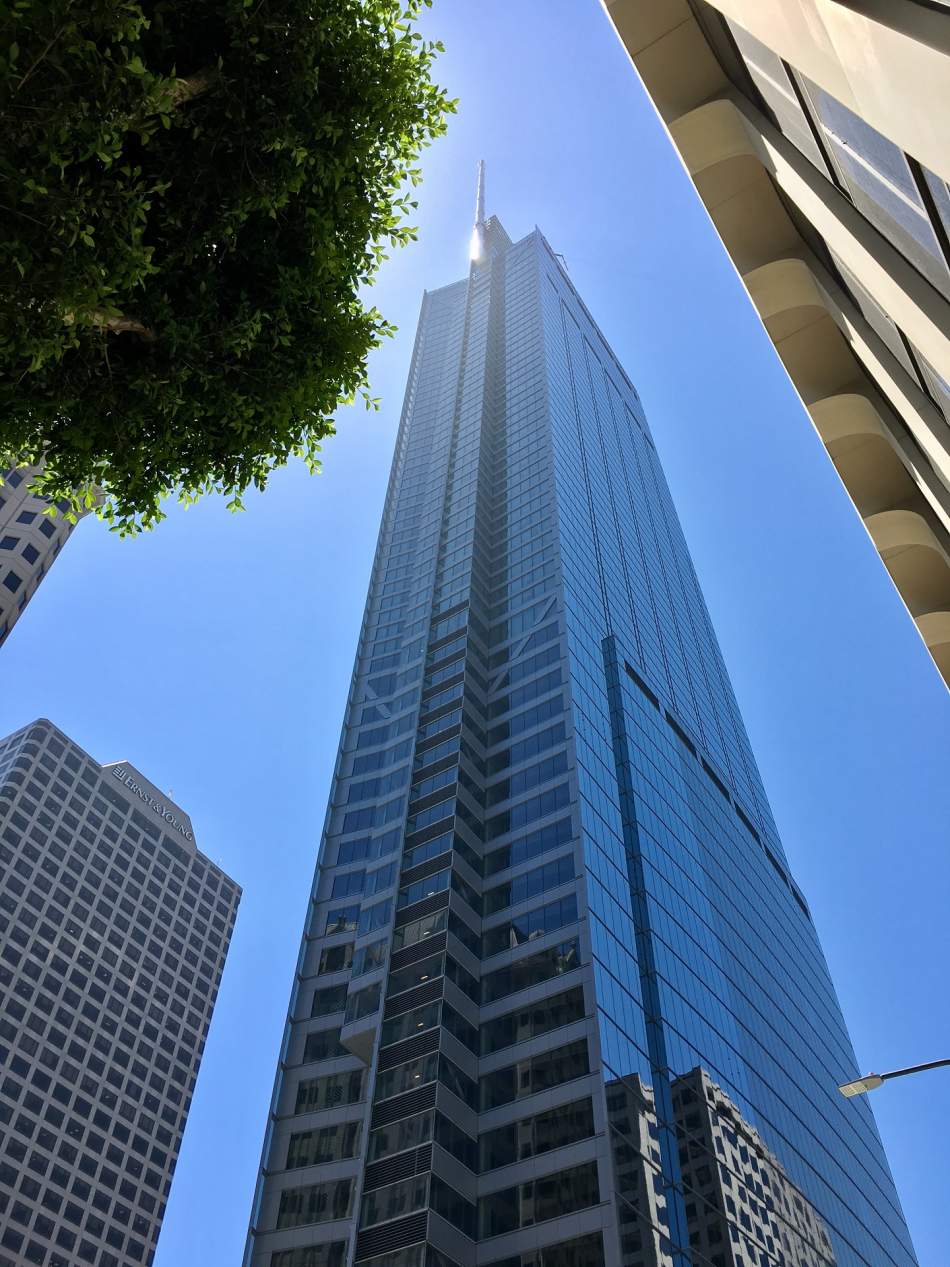From the editor: “L.A. Urbanized” is a series of articles exploring why Los Angeles is currently in the midst of an urban revolution and what it means for the city’s future. It documents the evolving development landscape of the region over the past few decades, identifies what key events brought about its urbanist turn, and considers what the impact of this transformation will be. Urbanize LA will publish one chapter of the 9-part series each Monday from April 2 through May 28.
- Introduction
- Chapter 1: Local Growth Politics and Development Patterns
- Chapter 2: The Several "Revitalizations" of Downtown Los Angeles
- Chapter 3: The Making of Los Angeles as a Global City
- Chapter 4: The Sparks of Downtown LA's Boom
Downtown Los Angeles during the first few years of the twenty-first century was like the Wild West of real estate investment. No one knew whether the initiatives taken by the government in the 1990s were going to have their desired effect, or whether they would amount to yet another failed top-down effort to revive the doomed Downtown. As such, investing in this type of environment was extremely risky, so much so that most large or public real estate companies were unwilling to take their chances. But during that time much of the real estate Downtown was inexpensive enough that it was open to an entirely different sort of business. Most of the early ‘00s investing in Downtown was done by risk-taking small shops and entrepreneurs, in addition to public agencies. By 2006-8, it appeared that the early risk-takers were proven successful, and so more established players began moving in. But the efforts of nearly all players Downtown were shut down by the 2008 Great Recession, which effectively froze Downtown growth in its place for a few years.
By about 2012, however, the freeze began to thaw, and the major real estate players, relatively flush with capital after a few years of being tight-pursed, returned to DTLA in force. By this point the concept that ‘if you build it, they will come’ had been proven for Downtown, with the bulk of the risk borne by the smaller entrepreneurs. The entry of these larger, more established domestic firms into Downtown marked an inflection point of sorts, accelerating the rate of growth and the scale of projects to a transformative level. But it was international firms, especially those from Mainland China, that truly pushed Downtown development to a grandiose level, following an incentive structure that included non-monetary considerations.
Chinese Capital Flight
By far the largest source of foreign capital injected into DTLA over the past few years has come from Mainland China. There, a corruption crackdown begun in 2012 is making many affluent Chinese concerned that the state may seize their assets and even threaten their personal freedom. Further, the Chinese economy is no longer promising the same sky-high returns it had been for decades, and perceived risks there are increasing. For purposes of safe-keeping, many wealthy Chinese people are incentivized to move a lot of their money overseas, beyond the reach of the Chinese government and the recent instability of the Chinese economy. Los Angeles is usually viewed by them as a safe investment destination, so Chinese developers have funded some of the most dramatic projects currently under development Downtown.
Xi Jinping rose to power and began his corruption crackdown in China in 2012, and since then the rates of overseas investment by private Chinese individuals and the number of Chinese families immigrating to America via investor visas have both skyrocketed. The prevailing explanation is that these individuals, whether corrupt or not, are fearful that the communist government will seize their assets or even put them in prison. By investing their money in America (and elsewhere), the Chinese government will not be able to seize it so easily, and these individuals may even be able to flee to investment-destination countries should the Chinese government target them.
The numbers give reason to their fear and illustrate its effects. Just in 2015, the crackdown “netted” over 300,000 people in China, and that same year “more than $600 billion of assets have been moved from Chinese yuan into foreign currency,” with the rate of capital flight accelerating over the course of the year. In 2012, the first year of the corruption crackdown, “Chinese buyers spent $30 billion on overseas real estate […] Of that, $9.1 billion went to the United States and much of it specifically to California. And almost 70% of the purchases made by Chinese buyers in the United States were made entirely in cash.”
This investment is spread widely, even within just the LA area, but within the purview of DTLA specifically, it has made its impact. Most notably, Chinese firms are developing four of DTLA’s most ambitious new projects, all in the immediate vicinity of STAPLES Center. These include Oceanwide Plaza, a $1 billion project immediately to the east of STAPLES Center; the Metropolis project, another $1 billion project consisting of four towers to the north of LA Live; the Shenzhen Hazens project immediately east of LA Live; and the proposed Olympia project by a firm called City Century across the street from the Metropolis development, a project to which it is quite similar.
These projects are the most visible Chinese investments Downtown, but Chinese capital has pervaded many projects in DTLA and across the Greater LA Area. These include the gargantuan One Beverly Hills project on the West Side near the intersection of Wilshire and Santa Monica boulevards, one of the region’s most prestigious locations. Chinese funding is kick-starting the development of a massive Frank Gehry-designed complex across the street from the Disney Concert Hall, Chinese companies are building high-rise projects west of the 110 freeway, beyond which little major development has been pursued thus far, and a Shanghai-based firm is constructing the Perla tower, the first residential high rise built in the Historic Core area of Downtown in over 100 years.
Why do Chinese investors choose to place so much of their money in Los Angeles in particular? Many major cities around the world are destinations for Chinese investment, but a plurality (25%) of overseas Chinese property investment today is going to the United States. America is generally viewed by investors around the world as being among the most stable investment markets. In an era of increasing volatility and economic uncertainty, both in the developing world and in Europe, America’s economy has in recent years been among the best-performing for developed world economies. In terms of magnitude, it is also a very large and diversified economy, and its rules regarding foreign investment are relatively unrestricting, presenting international investors with a wide range of opportunities. Generally, America’s economy is viewed as a safe haven for capital during internationally turbulent economic times.
For many investors from China, however, one of America’s key allures may be the promise that investing in America is a means toward securing legal residency in America. Since the 1990s, the United States has offered up to 10,000 “EB-5” investor visas every fiscal year. These visas, which establish permanent residency by providing a clear path toward a Green Card, are awarded to foreign nationals who invest a certain minimum dollar value in America and stimulate a certain minimum number of jobs by that investment. For most years of EB-5’s existence, that 10,000 visa cap was never reached, but in recent years that number is being reached months before the end of the fiscal year, given a dramatic spike in Chinese EB-5 applications. Indeed, as of 2014 “Chinese nationals accounted for 90% of EB-5 visas issued, compared to just 13% in 2004,” the effect of which being that “the waiting line now for an EB-5 visa is estimated to stretch two to three years, according to law firm Greenberg Traurig.” Similar programs have been discontinued in other Western countries, leaving America as a particularly desirable investment destination as a means of securing an EB-5 visa and thus residency.
Chinese Los Angeles
Within this country, Los Angeles has been the city with the second-highest Chinese property investment levels, after New York. Several factors are at play in making DTLA specifically an enticing investment destination for Chinese people looking to offshore their capital. For one, local politicians actively court Chinese investment. LA Mayor Eric Garcetti embarked on a grand tour of Asia in November of 2014 to promote trade and investment, with an entourage of 80 LA political and business leaders, stops in six cities (four of which were in China), several high profile meetings and media events, and relational efforts directed toward Chinese real estate developers. I spent the summer of 2015 interning on Mayor Garcetti’s Business Team, and on a few occasions we hosted delegations of prospective investors from China to inform them about real estate opportunities in DTLA.
But more importantly, Los Angeles and China are increasingly linked economically and culturally. Home to America’s largest port, Los Angeles is the locus of 45% of the trade between America and China. Given this economic tie and the allure of Hollywood (whose movies feature prominently in modern Chinese pop culture and whose studios have also become the subject of Chinese investment in recent years), tourism from China to the LA area has increased dramatically in recent years as more Chinese people possess the resources to travel abroad. There were roughly 150,000 Chinese visitors to LA in 2009, yet this number skyrocketed to 1 million visitors in 2016. Likely many of these additional visitors are in Los Angeles to see friends and family who have moved there from China permanently. Over the past decade, China has surpassed Mexico as the largest source of immigrants to California. The rate of migration from China to California has more than tripled since 2005, and roughly half of recent Chinese immigrants to California are moving to the Greater LA Area.
As such, a Chinese investor who develops a property in Los Angeles and secures an EB-5 visa for permanent residency will have a culturally familiar community that he/she can join within that metropolitan area. This investor may be incentivized to develop in DTLA specifically. Rob McRitchie, Vice President of the real estate services firm Jones Lang LaSalle, identifies DTLA’s advantages for Chinese property investment as its unique potential for sizeable projects in the heart of a major urban area, its central geographic location within that area (and relative proximity to the ethnic Chinese enclaves of the San Gabriel Valley), and the relatively friendly political climate toward development found almost exclusively in DTLA.
Perhaps it is easy to overlook the meaning that specifically Los Angeles, as opposed to the other major investment destinations New York or San Francisco, holds for Chinese investors and emigrants, and how this meaning attracts increased investment to Los Angeles. LA attracts a great share of Chinese investment in part because it contains the strongest ‘China Infrastructure’ of the three, a concept described to me in conversation with the Managing Partner of a major EB-5 investment opportunities fund.
Greater Los Angeles contains a region called the San Gabriel Valley, located northeast of DTLA, which is largely a pleasant suburban area known in part for its sizable Asian (and particularly Chinese) ethnic community. The San Gabriel Valley is so large, and home to so many people from the many regions of China, that for many would be immigrants from China it offers them something they often view as an improved version of China, with many of the pros but fewer of the cons. Chinese migrants to the San Gabriel Valley can eat at the same array of authentic Chinese restaurants they would find at home, shop at stores and grocery shops catering to Chinese tastes, and speak to most people they interact with in Chinese. They get to do this, however, in contrast to Mainland China, in a place where the air is much less polluted, the food is almost always safe to eat, and there is little risk of being suddenly ‘netted’ by an authoritarian government. Further, many people in China perceive the American education system as more holistic, and desire access to it for their children.
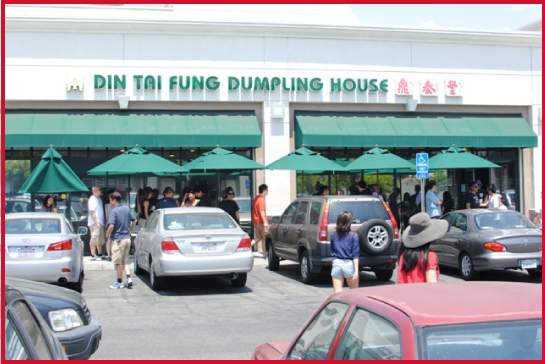
Similar Chinese ethnic enclaves exist in the Bay Area and New York, but for a few reasons these enclaves do not hold the same cachet for many people in China as does the San Gabriel Valley. New York’s main Chinese enclave today is Flushing, Queens, but this neighborhood might be perceived as short on prestige, because it is not in Manhattan. Chinese enclave neighborhoods such as Cupertino in the Bay Area face a similar challenge, though perhaps to a lesser extent, because they are not in the city of San Francisco — generally though in the Bay Area the ethnic Chinese population is large and dispersed throughout. This location problem is less pressing in LA, where many of the most desirable neighborhoods are rather remote; and the scale of both of these other enclaves is nowhere near the size of the San Gabriel Valley.
Moreover, one of the unique advantages of the San Gabriel Valley is that the land is inexpensive enough for newcomers to build single-family “McMansions with Chinese characteristics,” as Los Angeles Times architecture critic Christopher Hawthorne puts it, in reference to Deng Xiaoping’s description of China’s 1980s market reform experiment as “socialism with Chinese characteristics.” Chinese buyers often view this home format as desirable, in that it contrasts with the cramped quarters of today’s major Chinese cities, and it allows them to tailor these properties to desirable feng shui and other standards.
Other International Investment
Of course, not all of the foreign money coming into LA development is from China. The new tallest tower west of Chicago, the Wilshire Grand Center in DTLA, was built by Korean Air. After an explosive period of development in the 1980s and then a few decades of inactivity, certain major Japanese multinational conglomerates are moving back into LA in force. Mitsui Fudosan is currently constructing a pair of skyscrapers on the sites of two DTLA surface parking lots it has owned for over 30 years. Sumitomo Realty and Development Co. has recently wrapped up the leaders of its operations for Europe and Southeast Asia and placed them in a newly-established prestige Century City office address; the major developments they will pursue are yet to be determined. A Canadian development company called Onni is one of the most ambitious DTLA skyscraper builders. Financing from major European countries such as the UK and Germany is common for these sorts of major projects in LA. Los Angeles generally, and Downtown LA specifically, is in the midst of the most transformative real estate boom it has seen in decades, and investors of all stripes have been eager to get in on the action. The ramifications of this transformation, however, extend far beyond the reshaping of the city skyline.
Previous Installation: The Sparks of Downtown LA's Boom
Jason Lopata works as a land use consultant with Craig Lawson & Co., LLC, helping real estate development projects in LA navigate the city approvals process. Jason previously spent time on the Business Team of LA Mayor Eric Garcetti. He also writes articles on globalization and urban development for Stratfor, the geopolitical analysis website. Jason received his bachelor’s degree from Stanford University and completed programs of study at the University of Oxford and at UCLA’s Anderson School of Management. While at Stanford, he founded and led the student real estate organization, and authored his senior thesis on Los Angeles development over the past 30 years.




